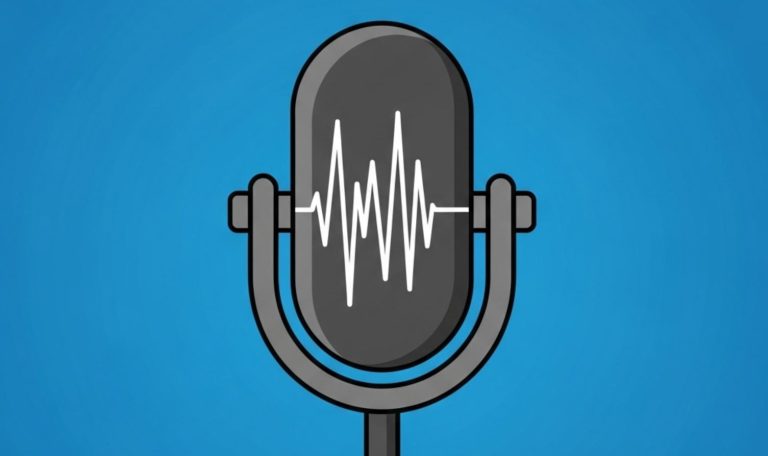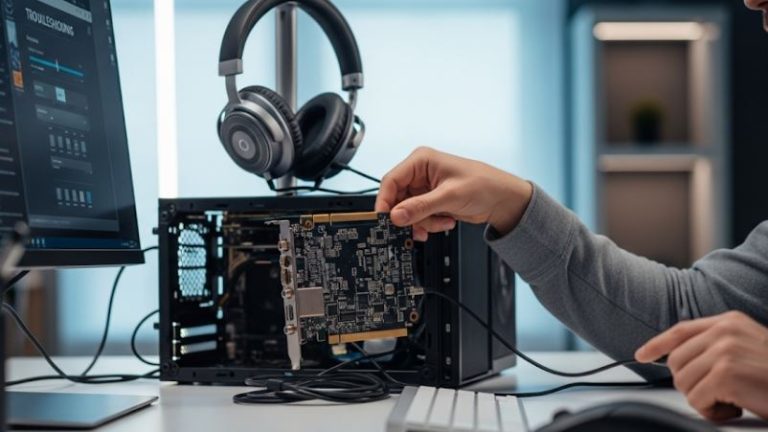A Solid State Drive (SSD) failure can feel like a digital catastrophe. These speedy storage devices, known for their performance and reliability, house our precious documents, cherished memories, and critical system files. When an SSD suddenly becomes unresponsive or „dead,” the primary concern is often the irreplaceable data trapped within. While some SSD failures are terminal and require professional intervention, there are scenarios where specialized data recovery software can offer a beacon of hope.
It’s crucial to understand that „dead” can mean different things. If an SSD is entirely electrically fried and not detected by your computer’s BIOS or operating system at any level, software running within that OS environment won’t be able to interact with it. However, if the SSD is detected but inaccessible, corrupted, or causing system instability, these are areas where software may have a fighting chance.
Understanding SSD Failure: Why It’s a Different Ballgame 💾
Recovering data from SSDs presents unique challenges compared to traditional Hard Disk Drives (HDDs). HDDs store data magnetically on spinning platters, and failures often involve mechanical parts like read/write heads or motors. SSDs, on the other hand, use NAND flash memory chips and a controller.
Common SSD failure modes include:
- NAND Flash Memory Wear: Each memory cell in an SSD has a limited number of write cycles. Over extensive use, cells wear out, leading to data corruption or an inability to write new data. Modern SSDs have wear-leveling algorithms to distribute writes evenly, but eventual wear is inevitable.
- Controller Chip Failure: The SSD controller is the brain of the drive, managing data storage, retrieval, encryption, and communication with the computer. A malfunctioning or failed controller can render the entire drive inaccessible, even if the NAND memory chips themselves are fine. This is a common culprit in „dead” SSD scenarios.
- Firmware Corruption: SSDs run complex firmware. If this firmware becomes corrupted (e.g., due to a sudden power loss during an update or a bug), the SSD can become unresponsive, behave erratically, or fail to be recognized correctly. Firmware issues can sometimes mimic a completely dead SSD.
- Electronic Component Failure: Like any electronic device, capacitors, resistors, or other components on the SSD’s circuit board can fail due to power surges, manufacturing defects, or overheating, leading to a truly non-functional SSD.
- Logical Errors: Corruption in the file system, partition table, or master boot record can make the data on an SSD inaccessible, even if the hardware is technically sound. The drive might appear as „RAW” or „uninitialized.” This is often a scenario where SSD data recovery software can be most effective.
An important aspect of SSDs is the TRIM command and garbage collection processes. TRIM allows the operating system to inform the SSD which data blocks are no longer in use and can be wiped internally. While great for performance and longevity, it means that deleted files might be permanently erased much faster than on an HDD, making recovery of previously deleted files very difficult on a healthy, functioning SSD. However, if an SSD fails suddenly, TRIM may not have had a chance to wipe data related to the current file system structure or recently accessed files before the failure, potentially leaving data recoverable. For more information on how SSDs operate, you can explore resources like Crucial’s guide on how SSDs work.
When Can Data Recovery Software Potentially Help with a „Dead” SSD? 🤔
The term „dead SSD” can be a bit ambiguous. For data recovery software to have any chance, the SSD must be at least partially recognizable by a computer system, even if it’s not functioning correctly.
Software solutions are most likely to be helpful in the following situations:
-
Logical Corruption:
- The SSD is detected by the BIOS/UEFI but not by the operating system, or it shows up as „RAW,” „unallocated,” or with an incorrect capacity.
- The file system (e.g., NTFS, exFAT, APFS) is corrupted, making files inaccessible through normal means.
- The partition table is damaged or lost.
- The drive suffers from a severe virus or malware attack that has hidden or corrupted data. In these cases, the underlying hardware of the SSD might still be functional, and specialized recovery algorithms can scan the drive at a low level to reconstruct file structures and retrieve lost files.
-
Minor Firmware Issues:
- Sometimes, firmware glitches can cause an SSD to be misidentified or become inaccessible. If the issue isn’t a catastrophic firmware failure requiring specialized hardware tools to reflash, some advanced data recovery software might be able to access the raw data on the NAND chips, bypassing the problematic firmware to a limited extent. This is a less common success scenario for software alone but not impossible.
-
Bad Sectors (or Failing Blocks):
- While SSDs don’t have „sectors” in the same way HDDs do, they have blocks of NAND flash memory that can fail. If a limited number of blocks become unreadable, the SSD might become very slow, hang, or refuse to boot. Data recovery software with good imaging capabilities can attempt to read data from the healthy portions of the drive, skipping over the bad blocks.
When Software Likely Won’t Help:
- Complete Electronic Failure: If the SSD’s PCB (Printed Circuit Board) has suffered significant electronic damage (e.g., burnt controller chip, damaged power components) and is not detected by the BIOS at all, no software will be able to communicate with it.
- Catastrophic Controller Failure: If the controller chip is entirely dead or severely damaged, data access is usually impossible without highly specialized (and expensive) professional intervention, often involving removing NAND chips and reading them directly (chip-off recovery).
- Severe NAND Flash Wear Across Multiple Chips: If a significant portion of the NAND flash memory itself is degraded beyond readability, software can’t reconstruct data that no longer reliably exists.
- Encryption-Related Issues: If the SSD employs hardware encryption and the encryption key is lost or the decryption mechanism within the controller has failed, recovering readable data is exceptionally difficult, if not impossible, even for professionals.
The first crucial step is to determine if the SSD is detected at any level. If it appears in the BIOS/UEFI setup utility or in Disk Management (Windows) / Disk Utility (macOS) – even as an unknown or uninitialized device – there’s a glimmer of hope for software-based recovery.
Key Features to Look for in SSD Data Recovery Software ⚙️
When choosing a software tool to attempt data retrieval from a compromised SSD, consider these essential features:
- Comprehensive File System Support: The software should support a wide array of file systems, including NTFS, FAT32, exFAT (common for external SSDs and Windows), HFS+ and APFS (for macOS), and potentially Linux file systems like EXT4 if applicable.
- Deep Scan Capability: For severely corrupted or seemingly „dead” SSDs, a quick scan is rarely enough. A deep scan (or raw scan) meticulously examines every readable block on the drive to identify file signatures and reconstruct data, even if the file system structure is completely gone.
- Preview Functionality: The ability to preview recoverable files (like images, documents, or videos) before committing to the recovery process is invaluable. This helps you assess the quality of the recoverable data and whether the software is actually finding what you need.
- Disk Imaging/Cloning Feature: This is critically important for failing SSDs. Constant scan attempts can put further stress on an already unstable drive. Good software will allow you to create a sector-by-sector image of the problematic SSD to a healthy storage device. You then perform the recovery operations on this image, preserving the original state of the failing SSD.
- Recovery from Non-Booting Systems: If the SSD is the primary boot drive and the system won’t start, the software should offer a way to create bootable recovery media (USB drive or DVD). This allows you to boot your computer from the recovery media and then access the problematic SSD.
- Specific SSD Recovery Algorithms: While many general data recovery tools work on SSDs, some newer programs claim to have algorithms optimized for the way SSDs store data and handle TRIM (though TRIM’s impact on a failed drive can be complex). Look for mentions of SSD-specific handling.
- User-Friendly Interface: Data recovery can be stressful. An intuitive, clear user interface makes the process less daunting, especially for non-technical users.
- Selective Recovery: The ability to choose specific files and folders for recovery, rather than having to recover everything, saves time and storage space.
- Save and Load Scan Sessions: Deep scans can take many hours. The option to save a scan session and resume it later is a very useful feature.
- Technical Support: Reliable customer support can be a lifesaver if you encounter issues or have questions during the recovery process.
Prominent Data Recovery Software Options for SSDs 💻
Several data recovery software tools are available, each with its strengths and weaknesses. It’s important to note that no software can guarantee 100% recovery, especially from a severely damaged or „dead” SSD. Success rates vary widely depending on the nature of the failure.
Here are some well-regarded options:
-
Disk Drill
- Overview: Disk Drill (available for Windows and macOS) is known for its user-friendly interface and robust recovery capabilities. It supports a wide range of file systems and storage devices, including SSDs.
- SSD Focus: While not exclusively for SSDs, its deep scan algorithms are effective on logically damaged SSDs. It also offers S.M.A.R.T. disk monitoring to help predict potential failures.
- Pros: Intuitive UI, preview feature, byte-to-byte backup (disk imaging), recovery vault for future protection, free version allows previewing and recovering up to 500MB (Windows).
- Cons: Deep scans can be time-consuming (which is typical), full recovery requires a paid version.
- Effectiveness for „Dead” SSDs: Can be effective if the SSD is still detected by the system but inaccessible due to logical errors, partition corruption, or accidental formatting.
- Bootable Media: Yes, the Mac version particularly has good support for creating bootable recovery drives.
-
EaseUS Data Recovery Wizard
- Overview: A very popular and widely marketed tool, EaseUS Data Recovery Wizard (Windows and macOS) offers a straightforward three-step recovery process.
- SSD Focus: It supports SSD recovery and is often updated to handle new file system types and drive technologies. It claims to have optimized SSD scanning.
- Pros: Simple interface, good preview capabilities, sorts found files by type/path/time, can recover from formatted drives and lost partitions. Free version allows recovery of up to 2GB of data (with some social sharing conditions).
- Cons: The subscription model for higher tiers can be pricey for one-time use. Deep scan quality can vary.
- Effectiveness for „Dead” SSDs: Suitable for SSDs with file system corruption, accidental deletion (if TRIM hasn’t fully wiped data), or partition loss where the drive is still recognized.
- Bootable Media: The paid versions offer the ability to create bootable media.
-
Stellar Data Recovery (formerly Stellar Phoenix)
- Overview: Stellar is a long-standing name in the data recovery field, offering a suite of tools for various platforms and scenarios, including solutions for SSDs.
- SSD Focus: Their software includes options for recovering data from formatted, corrupted, or encrypted SSDs. Some versions offer specialized features for dealing with unbootable systems.
- Pros: Supports a vast range of file types, can recover from encrypted drives (if you have the key), offers drive imaging and cloning, advanced options for RAID recovery in higher editions. Provides preview of recoverable files.
- Cons: Can be more expensive than some competitors, especially for advanced features.
- Effectiveness for „Dead” SSDs: Good for logical failures, corrupted partitions, and situations where the SSD is detected but data is inaccessible. Their professional versions claim more advanced SSD capabilities.
- Bootable Media: Yes, available in technician and toolkit editions.
-
R-Studio
- Overview: R-Studio is a powerful, professional-grade data recovery solution favored by technicians and advanced users. It provides extensive control over the recovery process.
- SSD Focus: While not solely SSD-focused, its advanced algorithms and raw file recovery capabilities are highly effective on all types of drives, including SSDs with complex logical damage. It can handle drives with numerous bad sectors.
- Pros: Extremely powerful and flexible, excellent for complex data loss scenarios, supports network recovery, advanced RAID reconstruction, built-in hex editor, disk imaging.
- Cons: Steeper learning curve due to its professional feature set, interface can be intimidating for novices, more expensive.
- Effectiveness for „Dead” SSDs: One of the best choices for severe logical corruption on SSDs that are still detectable. Its imaging capabilities are robust, which is crucial for failing drives.
- Bootable Media: R-Studio Emergency version can be run from bootable media.
-
GetDataBack (Runtime Software)
- Overview: GetDataBack is known for its thoroughness and ability to recover data even when other tools fail. It has separate versions for NTFS, FAT, APFS, and HFS+ file systems.
- SSD Focus: Its read-only design is safe for failing drives, and its algorithms are adept at reconstructing file systems, which is beneficial for logically damaged SSDs.
- Pros: Very effective with corrupted file systems and partition tables, read-only operation by default, relatively simple interface for its power. Lifetime updates for the purchased version.
- Cons: Requires purchasing the correct version for your file system (though they now have a combined version). The interface looks a bit dated but is functional.
- Effectiveness for „Dead” SSDs: Excellent for SSDs that have suffered severe file system damage but are still recognized by the system.
- Bootable Media: Can be run from a bootable WinPE environment like BartPE or a custom Windows installation on a USB drive.
-
TestDisk and PhotoRec (CGSecurity)
- Overview: TestDisk and PhotoRec are free, open-source data recovery utilities. TestDisk specializes in recovering lost partitions and repairing boot sectors. PhotoRec is a file data recovery tool that works by identifying file headers (raw recovery).
- SSD Focus: They work at a low level and are file system and media agnostic, making them suitable for SSDs. PhotoRec is particularly good for recovering files when the file system is severely damaged.
- Pros: Completely free, very powerful, PhotoRec can recover a vast number of file types, TestDisk can fix partition tables and make non-booting drives bootable again. Cross-platform.
- Cons: TestDisk has a command-line interface that can be challenging for beginners. PhotoRec’s raw recovery can result in files without original names or folder structures.
- Effectiveness for „Dead” SSDs: If an SSD is „dead” due to partition table corruption, TestDisk might bring it back to life. If the file system is gone but the drive is readable, PhotoRec can carve out files.
- Bootable Media: Can be included in various Linux live distributions or run from a bootable USB with the necessary tools.
Important Note on Software Choice: Many of these tools offer a free trial or a free version that allows you to scan the drive and preview recoverable files. Always use this preview feature to gauge the software’s effectiveness for your specific situation before purchasing a license.
Step-by-Step Guide: General Approach to Using Data Recovery Software on an SSD 🛠️
If you’re attempting to recover data from a failing or seemingly dead SSD using software, follow these general steps carefully:
-
STOP USING THE SSD IMMEDIATELY! 🛑 This is the most critical first step. If the SSD is still partially operational, continued use (including booting from it or writing any new files) can overwrite the very data you’re trying to recover, especially with TRIM enabled. Power down the affected system.
-
Connect the SSD to a Healthy Computer (If Possible):
- Best Method: Remove the problematic SSD from its original computer and connect it as a secondary drive (internally or via a USB enclosure/adapter) to a working computer. This isolates the drive and prevents the original OS from trying to write to it.
- If it’s the Boot Drive and Cannot Be Removed: You will need to use data recovery software that can create bootable media (USB stick or DVD). You’ll boot the troubled computer from this recovery media to run the software in a separate environment.
-
Choose and Install Data Recovery Software: Install your chosen data recovery software onto the healthy working computer’s main drive, NOT onto the problematic SSD or the recovery media itself (unless the software is designed to run portably from the boot media).
-
Create a Disk Image (Highly Recommended): ✨ If the data recovery software offers a disk imaging or cloning feature, use it before attempting any direct scans on the failing SSD.
- Why? This creates a sector-by-sector copy of the SSD onto a stable storage medium (like an external HDD or another healthy SSD). All subsequent recovery attempts can then be performed on this image. This prevents further stress on the potentially failing SSD, which could cause it to degrade further or fail completely during a lengthy scan.
- Ensure you have enough free space on the destination drive for the image (it will be the full capacity of the source SSD).
-
Run the Scan on the SSD (or its Image):
- Launch the data recovery software.
- Select the problematic SSD (or the disk image you created) as the target for scanning.
- Most software will offer a „Quick Scan” and a „Deep Scan” (or „Full Scan,” „Raw Scan”).
- Quick Scan: Faster, looks for recently deleted files and basic file system information. Less likely to be effective for a „dead” or severely corrupted SSD.
- Deep Scan: Much slower (can take many hours depending on SSD size and condition), but it meticulously scans every block for recognizable file signatures. This is usually necessary for recovering data from a non-responsive SSD.
- Be patient. Do not interrupt the deep scan process.
-
Preview Recoverable Files: 🧐 Once the scan is complete, the software will display a list of found files, often in a tree structure or by file type.
- Use the preview function extensively. Check if important documents open correctly, if images are viewable and not corrupted, and if video/audio files play.
- Don’t assume a file is recoverable just because its name appears in the list. The preview is the best indicator of its integrity.
-
Select and Recover Files: ✅
- Select the files and folders you wish to recover.
- Crucially, save the recovered data to a different, healthy storage device. Never recover files back onto the same problematic SSD, as this will overwrite the data you are trying to save and could cause permanent loss.
- Organize the recovered data. Sometimes, original filenames and folder structures are lost, especially after a deep scan. You might need to manually sort through the recovered files.
What if Software Doesn’t Work? The Role of Professional Data Recovery Services 🧑🔬
There are limits to what software can achieve. If the following occurs, it’s likely time to consider professional data recovery services:
- SSD Not Detected at All: If the SSD doesn’t show up in the BIOS/UEFI or Disk Management/Disk Utility on any computer, no software will be able to access it. This usually indicates a severe hardware problem (e.g., controller failure, PCB damage).
- Physical Damage: If the SSD has visible physical damage, has been exposed to water, fire, or extreme electrical surge, software recovery is improbable.
- Software Yields No Useful Results: After trying reputable software and deep scans (ideally on a disk image), if no important files are found or all recovered files are corrupted, the damage might be too severe for software-level repair.
- Clicking or Beeping (Less Common for SSDs): While SSDs don’t have moving parts to click like HDDs, unusual electronic noises could indicate critical component failure.
What Professionals Can Do:
Professional data recovery services have specialized tools, cleanroom environments, and expertise that go far beyond software:
- Cleanroom Environment: Essential for opening drives without causing further contamination or damage from dust.
- Component-Level Repair: Technicians can diagnose and replace failed electronic components on the SSD’s PCB (e.g., capacitors, diodes).
- Firmware Repair Tools: They have access to proprietary tools and databases to repair or rebuild corrupted SSD firmware.
- Chip-Off Data Recovery: For severe controller failures, specialists can carefully desolder the NAND flash memory chips from the SSD’s board. They then use specialized readers to extract the raw data directly from these chips. This is a complex and delicate process requiring advanced knowledge of how data is stored and scrambled across multiple NAND chips by the SSD controller.
- Donor Parts: Similar to HDDs, sometimes parts from an identical, functional SSD (donor drive) can be used to temporarily revive a failed drive for data extraction, especially for PCB or unique controller issues.
The primary downside to professional services is the cost, which can range from several hundred to thousands of dollars, depending on the complexity of the failure and the type of SSD. However, if the data is irreplaceable or highly valuable, this can be a worthwhile investment. Many reputable services offer a free initial evaluation. For a better understanding of these advanced techniques, you might read about the SSD recovery process at a professional lab.
Preventative Measures to Avoid Data Loss from SSDs 🛡️
The best strategy for dealing with data loss is to prevent it in the first place. While no storage device is infallible, these measures can significantly reduce your risk:
-
Regular Backups (The Golden Rule!):
- This cannot be stressed enough. Back up your important data regularly to multiple locations.
- Use a combination of:
- External Hard Drives or SSDs: For local backups.
- Cloud Storage Services: (e.g., Google Drive, OneDrive, Dropbox, Backblaze) for offsite backups.
- Follow the 3-2-1 backup rule: At least three copies of your data, on two different types of media, with one copy stored offsite. Learn more about robust data backup strategies from cybersecurity resources.
-
Monitor SSD Health:
- Use S.M.A.R.T. (Self-Monitoring, Analysis, and Reporting Technology) monitoring tools to keep an eye on your SSD’s health status, wear levels, and temperature. Utilities like CrystalDiskInfo (Windows) or DriveDx (macOS) can provide these insights. Early warnings can give you time to back up data and replace a failing drive. An overview of S.M.A.R.T. for SSDs can be found on various tech sites.
-
Ensure Stable Power Supply:
- Use a good quality power supply unit (PSU) in your computer.
- Consider using an Uninterruptible Power Supply (UPS) to protect against sudden power outages or surges, which can damage SSDs.
-
Avoid Extreme Temperatures and Physical Shock:
- While SSDs are more resilient to physical shock than HDDs, they are still sensitive electronic devices. Protect them from drops and impacts.
- Ensure good airflow in your computer case to prevent overheating, which can shorten an SSD’s lifespan.
-
Update Firmware Cautiously:
- SSD manufacturers occasionally release firmware updates to improve performance or fix bugs. While generally beneficial, a failed firmware update can brick an SSD. Only update firmware if necessary, follow the manufacturer’s instructions meticulously, and ensure you have a complete backup before starting.
-
Don’t Fill SSDs to Maximum Capacity:
- Leaving some free space (10-20%) on an SSD allows wear-leveling algorithms and garbage collection processes to operate more efficiently, which can improve performance and longevity.
Conclusion: Hope and Realism for Dead SSD Data Recovery
Recovering data from an SSD that appears „dead” is a challenging task, but not always an impossible one with the right software and approach. If the SSD is suffering from logical corruption, file system errors, or minor firmware issues that still allow it to be detected by a computer, data recovery software offers a viable first line of defense. Tools like Disk Drill, EaseUS Data Recovery Wizard, Stellar Data Recovery, R-Studio, and the open-source TestDisk/PhotoRec provide powerful features that can help retrieve precious files.
The key is to act quickly, stop using the drive immediately, and if possible, work from a disk image to prevent further damage. However, it’s equally important to have realistic expectations. If the SSD has suffered a severe electronic or controller failure, or is completely undetectable by the system, software solutions will be ineffective. In such cases, professional data recovery services, despite their cost, are the only remaining option.
Ultimately, the most effective strategy against data loss is proactive prevention. Regular and comprehensive backups are your best insurance policy, ensuring that even if your SSD meets an untimely end, your valuable data remains safe and accessible.















